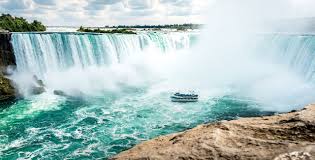Coffee, one of the world’s most beloved beverages, has a history spanning over a millennium. From its ancient origins in Ethiopia to its role as a global commodity, coffee has shaped economies, cultures, and daily rituals. This article explores the journey of coffee, its scientific properties, cultural significance, and its ongoing influence on modern society.
The Origins of Coffee
The story of coffee begins in Ethiopia, where legend credits its discovery to a goat herder named Kaldi. According to folklore, Kaldi noticed his goats became energetic after eating red berries from a certain shrub. Intrigued, he sampled the fruit himself, experiencing a similar invigoration. Over time, these berries—later identified as Coffea arabica cherries—were brewed into a drink by Sufi monks in Yemen, who used it to stay alert during nighttime prayers. By the 15th century, coffee had spread to Persia, Egypt, and Turkey, where it became a staple in social gatherings.
The Ottoman Empire popularized coffeehouses, or qahveh khaneh, which became hubs for intellectual discourse, art, and politics. These establishments were so influential that European travelers brought the concept—and the drink—back to their homelands. By the 17th century, coffeehouses flourished in Europe, fostering the Enlightenment era’s scientific and philosophical debates. London’s “penny universities,” where a cup of coffee cost a penny, allowed people of all classes to engage in conversation, cementing coffee’s role as a catalyst for social change.
The Science of Coffee
Coffee’s allure lies in its caffeine content, a natural stimulant that blocks adenosine receptors in the brain, reducing fatigue and enhancing focus. A typical 8-ounce cup contains 70–140 milligrams of caffeine, though this varies based on bean type, roast level, and brewing method. Coffea arabica, the most common species, accounts for 60% of global production, prized for its mild, aromatic flavor. The hardier Coffea canephora (Robusta) contains twice the caffeine but has a more bitter taste, often used in espresso blends.
The roasting process transforms green coffee beans into the familiar brown seeds. Light roasts preserve the bean’s origin flavors, while dark roasts develop smoky, caramelized notes. Brewing methods also impact the final product: espresso extracts concentrated coffee quickly under pressure, while pour-over methods highlight acidity and brightness.
Cultural Significance Around the World
Coffee’s cultural imprint varies globally. In Italy, espresso is a ritualistic staple, sipped quickly at a bar. In Turkey, coffee is prepared in a cezve (copper pot) and served unfiltered, with readings of the future in the grounds. Scandinavian countries consume the most coffee per capita, often enjoying it with sweet pastries like kanelbullar.
In the United States, coffee culture evolved from colonial tea drinkers seeking alternatives after the Boston Tea Party. The 20th century saw the rise of chains like Starbucks, which normalized specialty coffee, while today’s third-wave cafes emphasize single-origin beans and artisanal brewing.
Health and Controversy
Moderate coffee consumption (3–4 cups daily) is linked to health benefits, including reduced risks of Parkinson’s, type 2 diabetes, and liver disease. Antioxidants in coffee may combat inflammation and oxidative stress. However, excessive caffeine can cause anxiety, insomnia, and digestive issues. Pregnant individuals and those sensitive to stimulants are advised to limit intake.
Sustainability and Ethical Concerns
Coffee production faces environmental challenges, including deforestation, water use, and pesticide runoff. Shade-grown coffee, which preserves biodiversity, is gaining traction as an eco-friendly alternative to sun-grown monocultures. Fair Trade and Direct Trade certifications aim to ensure farmers receive fair wages, addressing poverty in producing nations like Brazil, Vietnam, and Colombia.
Climate change threatens coffee crops, with rising temperatures reducing suitable growing regions. Innovations like drought-resistant beans and agroforestry practices are critical to sustaining this $100 billion industry.
The Future of Coffee
Global coffee consumption continues to rise, driven by emerging markets in Asia. Specialty coffee, focusing on quality and traceability, is reshaping the industry, with consumers valuing ethical sourcing and unique flavor profiles. At-home brewing gadgets and cold brew trends reflect a growing demand for convenience and customization.
Conclusion
Coffee transcends its role as a morning pick-me-up, embodying centuries of history, cultural exchange, and human ingenuity. From its Ethiopian origins to its status as a universal ritual, coffee connects people across borders. As the world faces sustainability challenges and evolving tastes, the story of coffee remains inextricably tied to humanity’s past, present, and future.
Whether enjoyed in a bustling café or a quiet home, coffee is more than a drink—it’s a testament to resilience, creativity, and the shared joy of savoring life’s small pleasures.















